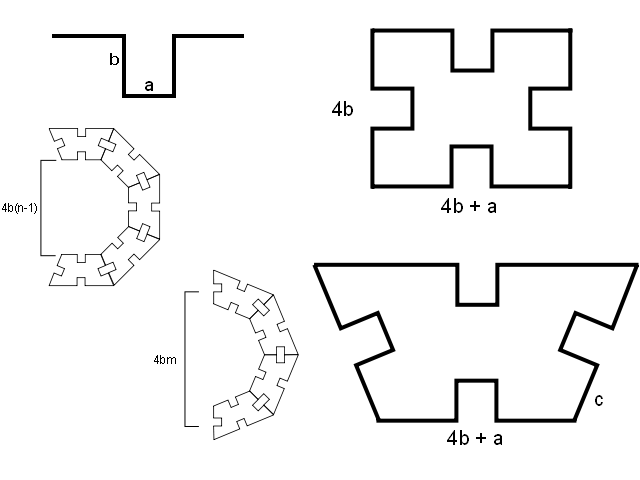I cut some vinyl for fun.

I tried to push the limits of the machine, to see what it would do. Here's what I learned. First, the knife can cut extremely fine details. Second, it's easy to cut out small patches for removal - it's easy to weed them with tweezers. Third, it's hard to cut out small patches that are supposed to stay. When you try to weed the area around them, it's nearly impossible to keep them in place.
For my friction fit puzzle set, I wanted to do something something unique. Instead of starting with an end goal and then cutting pieces to build it, I decided to try to build a piece set that could be used to build anything. Specifically, I wanted to be able to assemble the pieces in any configuration, and have them fit together nicely. This is easier said than done.
I designed two different pieces. One rectangle, and one trapazoid. The rectangle is sized such that if they are attached along the narrow direction, they stack flushed. Pieces then attached along the long axis press flushed to those along the narrow. Essentially, everything fits together tight.
The trapazoid is a little more complex. It is designed such that, if the angled edges are attached, eight of them form an octogon. This itself is fairly straightforward. The complicated part is that a stack of the rectangular pieces fits precisely inside the octogon. Moreover, four angled pieces, attached to form half an octogon, can also be attached to the side of a stack of the rectangle pieces. Below is an illustration of the pieces and these constraints.

It turns out that these constraints, along with the thickness of the material, precisely determine the shape of the pieces. Moreover, it's impossible to do this with more than one regular polygon at a time. That is, if we make a trapazoidal piece that forms an octogon, we can't make one that fits with everything else, and makes a hexagon (or any other regular shape).
I wrote a program that takes the thickness of the material and the number of sides of the desired polygon as input, and returns all of the relevant dimensions for designing the piece. I drew them in CAD, cut them out, and they actually worked.


I was able to use the pieces to build some interesting shapes, like weird circular things, and even a double helix.

